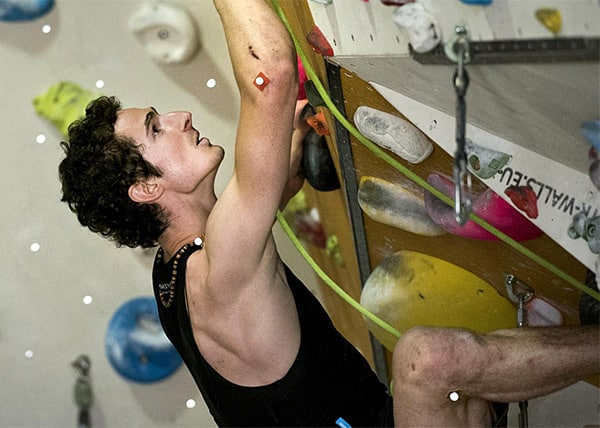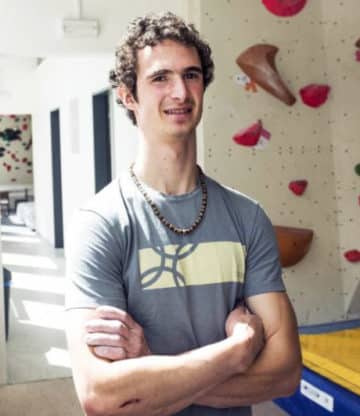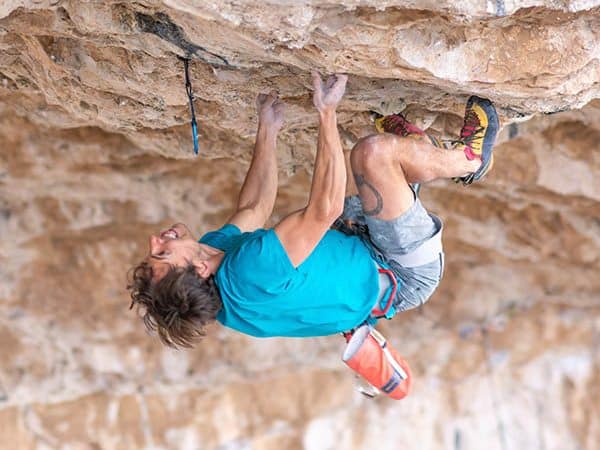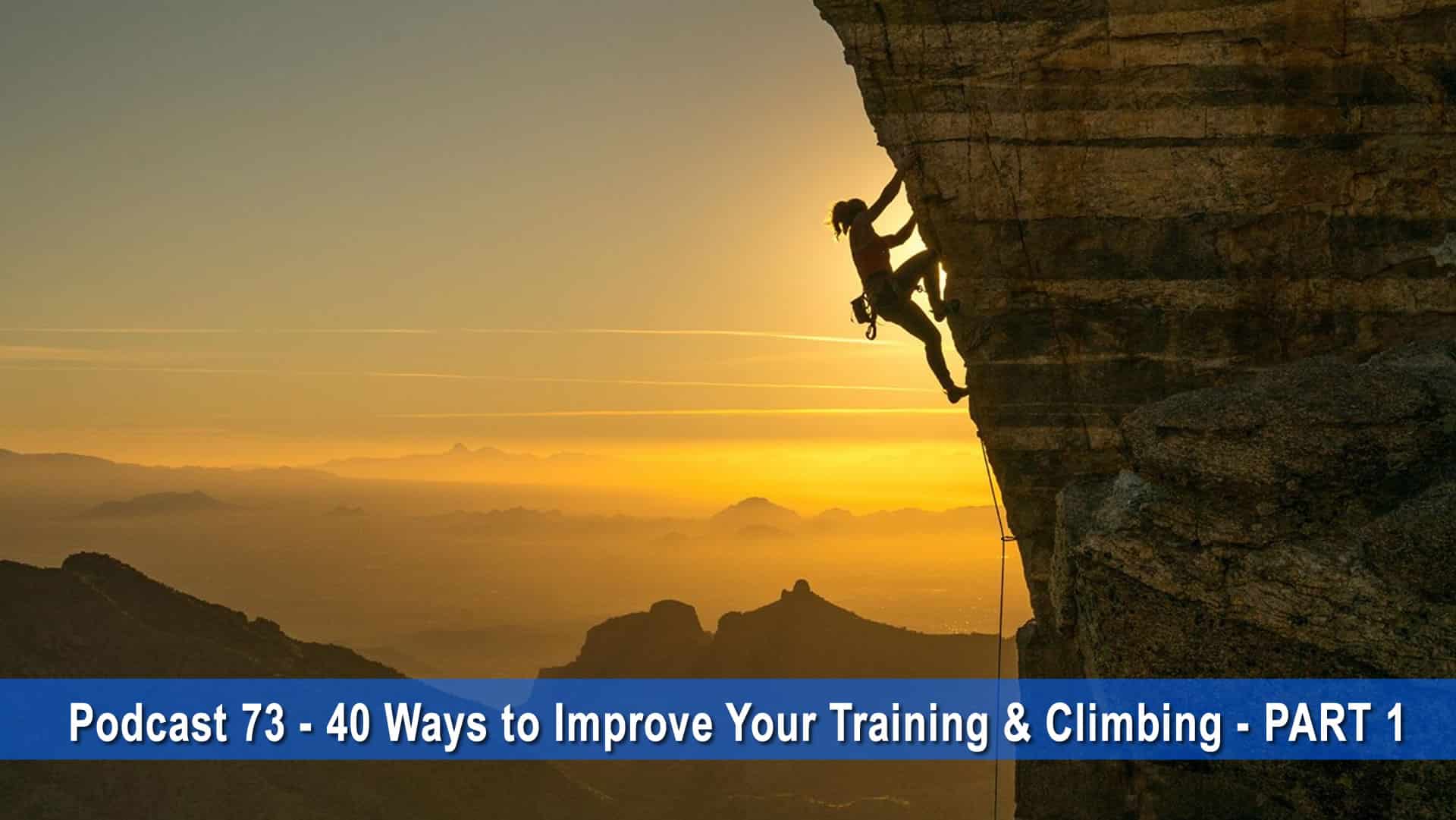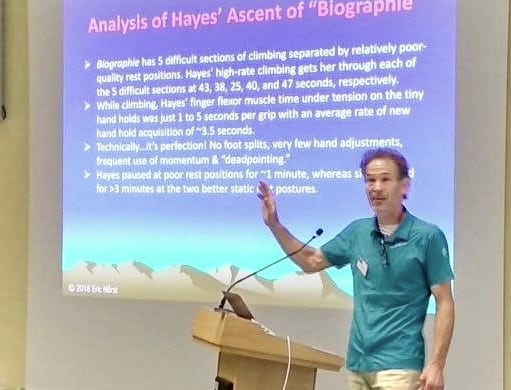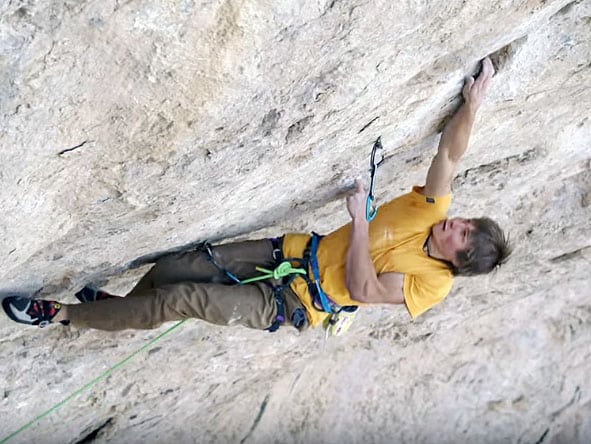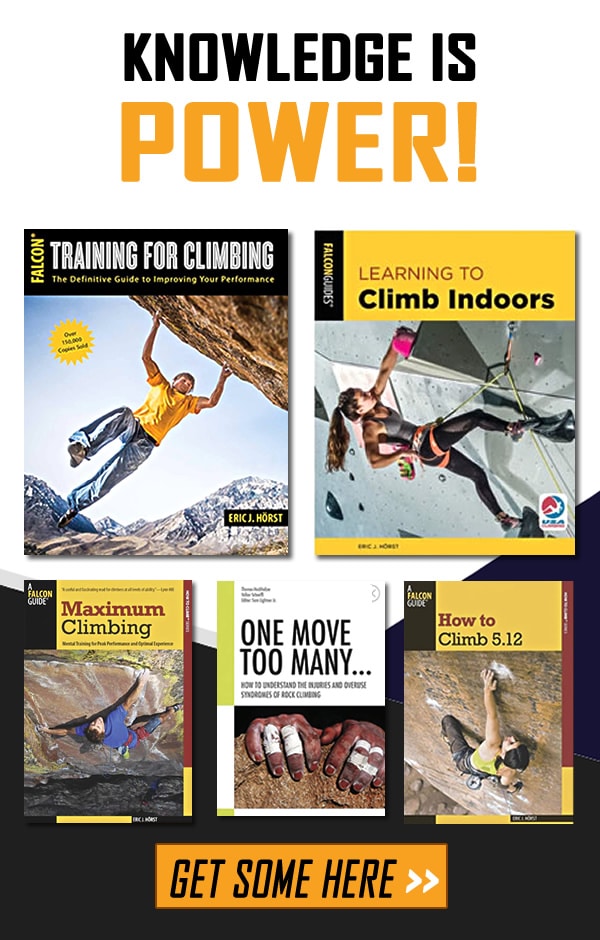For me, climbing and science go together like coffee and dark chocolate. Rarely does a day pass me by without a serving of climbing science…and a chunk of dark chocolate! I spend a tremendous amount of time studying, experimenting, and researching the science of training and climbing performance. Reading more than 100+ research papers per year (~90% from outside the field of climbing) gives me a rich, diverse understanding of human performance by way of the latest in human biophysics, molecular exercise physiology, genetics and epigenetics, and much more. Believe me, I could go on and on…but we’re here to talk about a crusher named Adam Ondra!
What Makes Adam Such a Unique and Amazing Climber?
In early 2018, just a few month’s after Adam’s breakthrough ascent of Silence (9c/5.15d), I received a call from Adam’s manager, Pavel Blažek. He had a great idea: To leverage science in an attempt to unlock some of the things that “make Adam, Adam”. Pavel had just read my analysis of Adam’s ascent of Silence, in which I documented his remarkable speed of movement—a rate that, at times, approached one new hand or foot move every 1.25 seconds! So my article served as a starting point for a more extensive study into what makes Adam such an incredible climber.
I spent a couple of days pondering all the possible research angles, and I emailed Pavel a sort of “wish list” to present to the small team of researchers he pulled together in the Czech Republic. For starters, there are the obvious physical metrics to be gleaned. For example, peak finger force to body weight ratio, arm and shoulder strength, flexibility, height and weight, APE index, and generalized VO2 Max.
More challenging, but in my opinion more important and revealing, would be determining Adam’s climbing specific VO2 and the critical force of his forearm flexor muscles. Unfortunately, there’s no validated and agreed upon best method of gathering this data—so we’ll need to wait a few years for the science to catch up. [In my opinion, the “holy grail” key performance indicators (KPI) for elite sport climbers are critical force, the anaerobic reserve (and recovery rate), and proton handling of the finger flexor muscles. The basis for an accurate cellular-level test may have to come from research employing Magnetic Resonance Spectroscopy, to peer inside the working finger flexor muscle cells, to measure ATP, CP, Pi, and calculate intracellular pH and oxygen flux. These are my dreams! haha.]
Regarding analysis of movement skills, there needed to be a test of climbing efficiency (geometric entropy), rate of new hold acquisition, and finger flexor time under tension. And finally there are a myriad of psychological and lifestyle factors—even nutrition and rest habits—that must somehow be assessed and compared with Adam’s peers. I even suggested a functional MRI brain mapping study and a genetic test. The latter would reveal which known elite athlete genetic polymorphisms Adam might possess.
Given a limited time frame and budget, a scaled-down first round of testing was performed in Spring 2018. (You can read the fascinating report in English or Czech, though I will summarize the findings below.) It’s my hope that additional testing can be performed in the near future—after all, Adam is a transcendent athlete who excels in many types of climbing (steep sport, technical slabs, big wall free climbing, and most recently hard crack climbing). And, with the rapid global growth of climbing and a 2020 Olympic debut, it would be a shame not to document as much as we possibly can about what makes Adam—and other elite climbers—such unique and exceptional vertical athletes!
Summary of Findings:
- Adam Ondra has really strong fingers; but not the strongest. His one-hand peak finger force (measured on a 20mm hold) is approximately 110% of his body weight. Anything over 100% of body weight is elite finger strength, but the highest readings measured (that I’m aware of) are in the range of 130% to 140%.
- Adam has remarkably strong shoulders, which allows him to maximize use of this “less-than-the-best” finger strength. This is an important, but often overlooked, distinction as finger grip can only be as functional strong as the shoulders muscles (rotator cuff and scapular stabilizers) are robust.
- Adam is exceptionally flexible. His hip movement, center of mass positioning, and extraordinary use of drop knee moves is, perhaps, unmatched among male climbers.
- Adam climbs with extreme speed and economy. To assess movement quality and economy, an n=2 movement, heart rate, and breathing study was conducted on a 20-meter indoor climb. Fellow Czech climber, Štěpán Stráník (a bouldering specialist) and Adam each climbed the 5.13d/8b route as video motion capture data was collected to augment pulse and breathing data collected by a “smart shirt”. Adam ascended the route in just 3 minutes, whereas Štěpán took 5 minutes to complete the climb. What’s more, Adam’s breathing and heart rate behavior was distinctly different than Štěpán’s. This likely relates to relative pace and ease of climbing (8b is an “easier” grade for Adam than Štěpán), but also differing arousal/relaxation levels and (I believe) a much higher generalized and climbing-specific VO2 possessed by Adam, than by the bouldering specialist, Štěpán.
- Adam’s physical talent stack is multiplied by his passion and climbing-centric lifestyle. There are many intangibles that are impossible to objectively measure; but it’s fair to say that few elite climbers possess Adam’s insatiable motivation and psych, dedication to training, simple/clean lifestyle, and the degree of professionalism by which he approaches his climbing life. In aggregate, these many factors are a huge difference-maker!
- A final surprise finding: “head like a pendulum!” Yes, Adam’s longer-than-average neck is a biomechanical asset. A biomechanics expert, Martin Zvonar, and Adam’s physio, Klaus Isele, have both observed how Adam effectively uses his head like a pendulum and lever to improve balance and foot force vector on the rock, respectively. Martin explains, “once he finishes a movement, he tilts his head back; the center of the lever is his center of gravity, and as a result his feet cling better to the wall.”
Here’s a link to the full report in English or Czech. Enjoy!
Want to see how Adam Ondra trains? Here’s a link to the first in a series of five training videos shot for EPIC-TV back in 2017.
Copyright © 2000–2018 Eric J. Hörst | All Rights Reserved.

